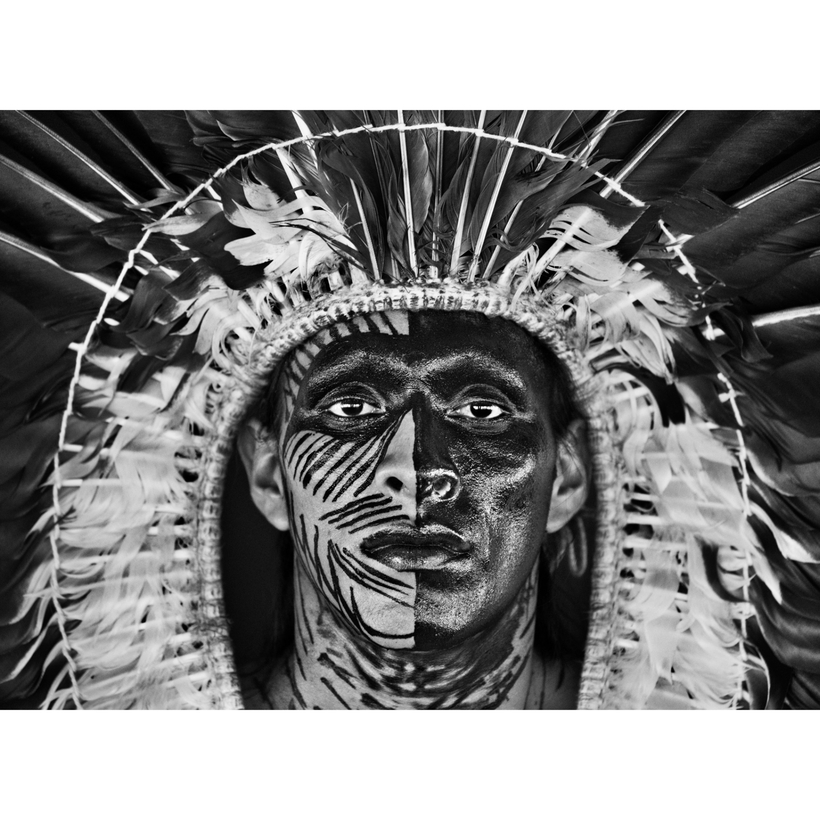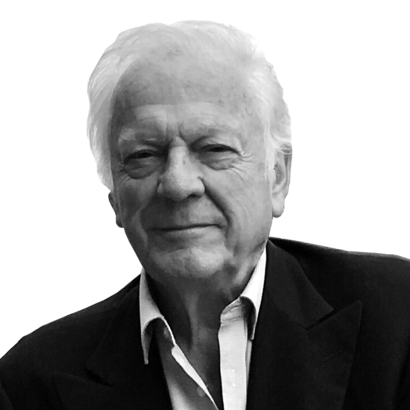Sebastião Salgado has never doubted the power of images. In the mid-1970s, when he switched careers from economist to photographer while in exile from Brazil’s military dictatorship, his early work in Africa drew attention to a famine ravaging the Sahel. Since then, driven by a mixture of idealism and ideology, he has won acclaim by addressing critical global issues in long-term research projects that have dominated his life.
The resulting black-and-white images, presented in myriad exhibitions and books, have earned Salgado renown as a man with a message. In Workers, he recorded the vanishing forms of manual labor that once defined the industrial age; Migrations captured the extraordinary movement of humanity taking place across the world, driven by wars, poverty, and natural disasters; and Genesis, designed as a love poem to planet Earth, portrayed the land and seascapes, animals and peoples, so far undamaged by modern development.

Salgado’s most recent project, Amazônia, is still more timely. And it comes with an extraordinary supplement: a special edition of the accompanying book with relief images for the blind.
The fruit of seven years’ work, Amazônia offers a stunning portrait of the Amazon’s vegetation, rivers, skies, and isolated tribes, highlighting what could be lost by the continued destruction of the world’s largest rainforest. The link to the climate crisis is self-evident. But Amazônia also served as a protest against the crude anti-environmentalism of Brazil’s then president, Jair Bolsonaro.
Designed by Lélia Wanick Salgado, the photographer’s wife and professional partner, the exhibition opened in 2021 in Paris, their home since the 1970s. It then traveled to London, Rome, São Paulo, Rio de Janeiro, Manchester, Avignon, and Los Angeles. And this year, accompanied as before by a concert of the Brazilian composer Heitor Villa-Lobos’s suite Forest of the Amazon, against a backdrop of Salgado’s projected photographs, Amazônia will be presented in Milan, Zurich, and Madrid.

While the exhibition has already spread the gospel of “Save the Amazon” to hundreds of thousands of visitors, Salgado is now engaged in perhaps his most original way of reaching a new audience. In collaboration with a French foundation, a limited edition of his photographs, called Amazônia Touch, is allowing the blind and visually impaired to “feel” the experience of the Amazon through relief images.
The initiative came from the Visio Foundation, which organizes programs giving the blind access to culture. “Tactile reading is a new way of understanding art,” Pascale Humbert, the foundation’s director, tells me. “In museums, there’s generally a ban on touching, but we think we’ve got around that. How can a blind child understand a monkey? Through tactile reading of a photo, he can understand fur and feel its fingers and so on.”

Between the idea and the reality, however, stood the immense cost and complexity of giving two-dimensional photographs a third dimension so they could be “read,” much as the blind read braille. The first door was opened thanks to a $335,000 grant from the Crédit Mutuel Alliance Fédérale Foundation, but many technical problems had still to be resolved.
“Tactile reading is a new way of understanding art.”
The plan was for a rectangular case with the same cover image as Amazônia to open like a book and reveal a paper pocket with room for a booklet, 21 images, and braille captions in French and English. With prior experience in embossing paper, including creating relief images of architectural designs, the team working on the project turned to a special thick paper called Pachica, imported from Japan.
The first step involved picking 18 photographs and three maps that could represent the flora and fauna of the forest, including human life. In several cases, this meant simplifying the image by, for example, removing background foliage from a portrait.

“Sebastião said, ‘You know how to do this, so do as you wish,’” recalls Laurent Nogues, whose Créanog studio created the final images. “But he was also involved at every stage.”
With each chosen photograph, the Créanog team prepared the outlines of the image to be transferred to paper that, with special ink and heating, would suggest the final relief. This version was then presented for review by Hoëlle Corvest, a blind expert in tactile images who worked at the Cité des Sciences, in Paris. In some cases, she suggested subtle changes; in others, she proposed a different image.
A computer then prepared the approved image for reproduction as a brass engraving, a process that in each case could take up to 30 hours. This engraving was then used to stamp the relief on Pachica paper in a process known as “blind embossing” or “white-on-white.” This, too, was time-consuming: the 21 images were stamped one by one for a print run totaling 550 copies of Amazônia Touch.

I was able to attend a workshop run by Corvest at which she introduced the reliefs to a dozen blind men and women, each with a tactile case before them. With each numbered image, she explained what it showed and invited her guests to discover it with their fingers. “Trees and clouds are treated very differently,” she explained. “Trees through little dots; clouds are smoother. Each photo offers a different aspect of the Amazon.”
In almost total silence, hands young and old felt their way across the images, some dwelling at length on a detail, such as a face. “That’s her hair, isn’t it?” one voice exclaimed. Others moved swiftly, as if seeking a panoramic view. Maps proved very popular. “That feels like the biggest river,” another voice said. “It must be the Amazon.” When Corvest announced that the books were gifts, there were cheers and applause.

“It’s a work of art,” Salgado says, as he admires different relief images at his studio, on the Canal Saint-Martin, in Paris. “I get very emotional when I think how it complements our work—our exhibitions, our concerts—in the highest possible way.”
Salgado has now persuaded his publisher, Taschen, to adopt the project, giving international distribution to Amazônia Touch. “The real problem is the cost of each case,” he says. “We get no royalty and Taschen isn’t looking for profit, but without some outside sponsor the book will be too expensive to be sold commercially.”
As an interim step, though, Créanog has reproduced a small number of images in resin with the idea that they could be displayed at the upcoming exhibitions. “That way, anyone can touch them without causing damage,” Nogues says. “And then you just wipe them with a damp cloth.”
Alan Riding is a former correspondent for The New York Times. His most recent book is And the Show Went On: Cultural Life in Nazi-Occupied Paris

